In late June, I had the pleasure of representing the AVA at the Antimicrobial Resistance (AMR) Summit, hosted by the Australasian Society for Infectious Disease and the Australian Society of Antimicrobials. The event was the second of its kind and focused on the effective action on AMR in Australia.
The summit brought together an impressive collection of experts in human and animal health. The Chief Medical Officer, Professor Brendan Murphy and Chief Veterinary Officer (CVO) Dr. Mark Schipp were both in attendance.
We were well represented by eminent veterinarians who articulated the progress of the veterinary profession, the challenges we face and highlighted areas for further development. A particular thanks to Professors Mary Barton, Glen Browning and Darren Trott, Associate Professors Jane Heller and Jacqui Norris, and Drs Laura Hardefeldt, Mark Schipp, Stephen Page, Melanie Latter and Debbie Neutze.
Drawing on the framework of Australia’s First National Antimicrobial Resistance Strategy 2015–2019, published by the Australian Government in 2015, four strategic pillars were identified as key discussion points for the summit:
- improving infection prevention and control
- practical antimicrobial stewardship
- improving surveillance and outbreak response
- research and development.
At the summary panel discussion, both the veterinary speakers on the day and I highlighted the biosecurity focus of the veterinary profession to address infection prevention and control, and how AMR naturally integrates in our context under this umbrella.
Veterinary research into AMR stewardship was highlighted, including the AVA’s AMR stewardship pilot trial that is currently underway in Canberra, as was the role for species-specific antibiotic prescribing guidelines. The relative split of AMR funding between human and animal health in this key area of shared interest was highlighted by the CVO. Professor Darren Trott also stressed the importance of a uniform testing procedure for antibiotic susceptibility by Australia’s veterinary laboratories as the first step to improved surveillance.
The preparation for this meeting highlighted to me the leadership role that we have in the world with respect to the low-level use of antibiotics in animals and the resources that are available to guide us on infection prevention and control and antimicrobial stewardship, including:
- ACV BIOCHECK™ Biosecurity Plan Program
- AVA Guidelines for Veterinary Personal Biosecurity
- AIDAP Prescribing Guidelines
- AVA Veterinary use of antibiotics highly important to the human health fact sheet
- AVA Prescribing veterinary antibiotics fact sheet
- AVA Safe handling of animals treated with veterinary antibiotics fact sheet).
To continue our leadership in this area, it is important that we collaboratively strive for continuous improvement. To make meaningful progress, collaboration with each other, with industry and producers is essential. The governance structures of these collaborations are key to the work, time, resources and professional expertise put into these collaborations being utilised and trusted. To this end, the AVA is currently working with Animal Medicines Australia on a 3-year project to develop species-specific antibiotic prescribing guidelines for horses and production animals. The first of this set of guidelines for pigs is underway.
Like most things, ‘big’ actions and projects ultimately only succeed if backed up by the small daily actions of individuals. The people who know me well know that I have a special love of lists, therefore I have included my list of personal takeaways as a clinician. There are some areas where I need to pull my socks up a little and others where I need to continue to have the hard conversations day in and day out:
- use the biosecurity and prescribing resources that we have available – the hard work has already been done and I need to reference, use and adapt these more frequently
- challenge the frequency that I use third-generation cephalosporins.
- continue to recommend culture and sensitivity testing
- challenge myself every time I prescribe an antibiotic: Is it really indicated? Is my choice appropriate? For the appropriate time? At the appropriate dose?
- continue to have the (sometimes difficult) conversations to educate clients and staff.
This article appeared in the August 2017 issue of the Australian Veterinary Journal
